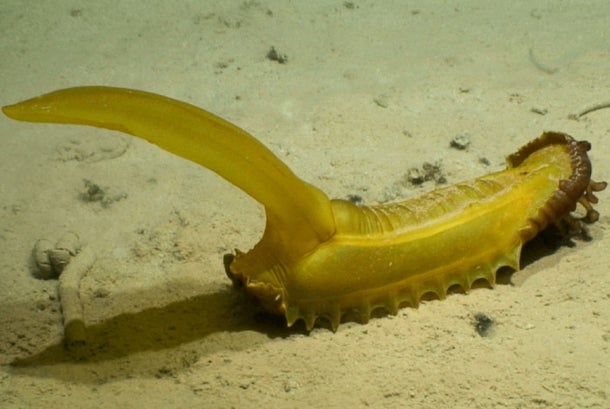Scientists find 39 potential new species in abyss of Pacific Ocean
Segmented worms and ‘gummy squirrel’ among strange creatures documented for first time

Marine scientists have found almost 40 potential new sea species while collecting DNA of creatures in the abyss of the Pacific Ocean they had previously only known about via photographs.
The strange creatures include segmented worms, invertebrates from the same family as centipedes, marine animals from the same family as jellyfish, and different types of coral.
During the study, researchers from the Natural History Museum in London extracted the DNA of the specimens from the deep depths of the Clarion-Clipperton Zone – which has an abundance of newly-discovered life and manganese nodules that contain nickel, copper and cobalt.
The expedition using a robotic sea vehicle led to the discovery of 39 potentially new species at the bottom of the ocean, the scientists claim.
Forty-eight out of the 55 DNA specimens recovered were of different species. Thirty-six were found at more than 4,800 metres deep, two were collected on a seamount slope at 4,125m, and 17 were found between 3,095 and 3,562m deep.
One of them is the “gummy squirrel” – psychropotes longicauda – a peculiar-looking sea cucumber that has 18 short feeding tentacles.
Its nickname is derived from its likeness to a gummy sweet – allegedly shaped like a squirrel. It lives 5,040m deep on sedimentary seabeds across the world.
Despite the name, sea cucumbers are not vegetables. They are animals akin to starfish and sea urchins.
Another of the creatures whose DNA was taken during the study is the Peniagone vitrea, another species of sea cucumber that was first categorised by the Swedish zoologist Hjalmar Théel in 1882.
It has a transluscent body and multiple pairs of tubed feet. It’s found 4,874m deep in the sea.
In 2019, Chinese scientists first identified the psychropotes verrucicaudatus found in the South China Sea.
Now, researchers at the National History Museum have extracted the DNA of the violet-coloured sea cucumber that has skin covered in wart-like growths, 16 tentacles and rows of tubed feet.
Although scientists knew about the existence of the creatures, they said the newly-collected DNA will help to study and categorise them.
The study’s lead author, Dr Guadalupe Bribiesca-Contreras of the Natural History Museum, said: “This research is important not only due to the number of potentially new species discovered, but because these megafauna specimens have previously only been studied from seabed images.
“Without the specimens and the DNA data they hold, we cannot properly identify the animals and understand how many different species there are.”
Dr Adrian Glover, who leads the Natural History Museum's deep-sea research group, said: “We know that millimetre-sized animals called macrofauna are extremely biodiverse in the abyss.
“However, we have never really had much information on the larger animals we call megafauna, as so few samples have been collected. This study is the first to suggest that diversity may be very high in these groups as well.”
The mining of nickel, copper and cobalt – found in large concentrations in the zone – for use in high-tech and green industries could negatively impact the ecosystem of the abyss, the study says.
The study has been published in the journal Zookeys.
Subscribe to Independent Premium to bookmark this article
Want to bookmark your favourite articles and stories to read or reference later? Start your Independent Premium subscription today.

Join our commenting forum
Join thought-provoking conversations, follow other Independent readers and see their replies